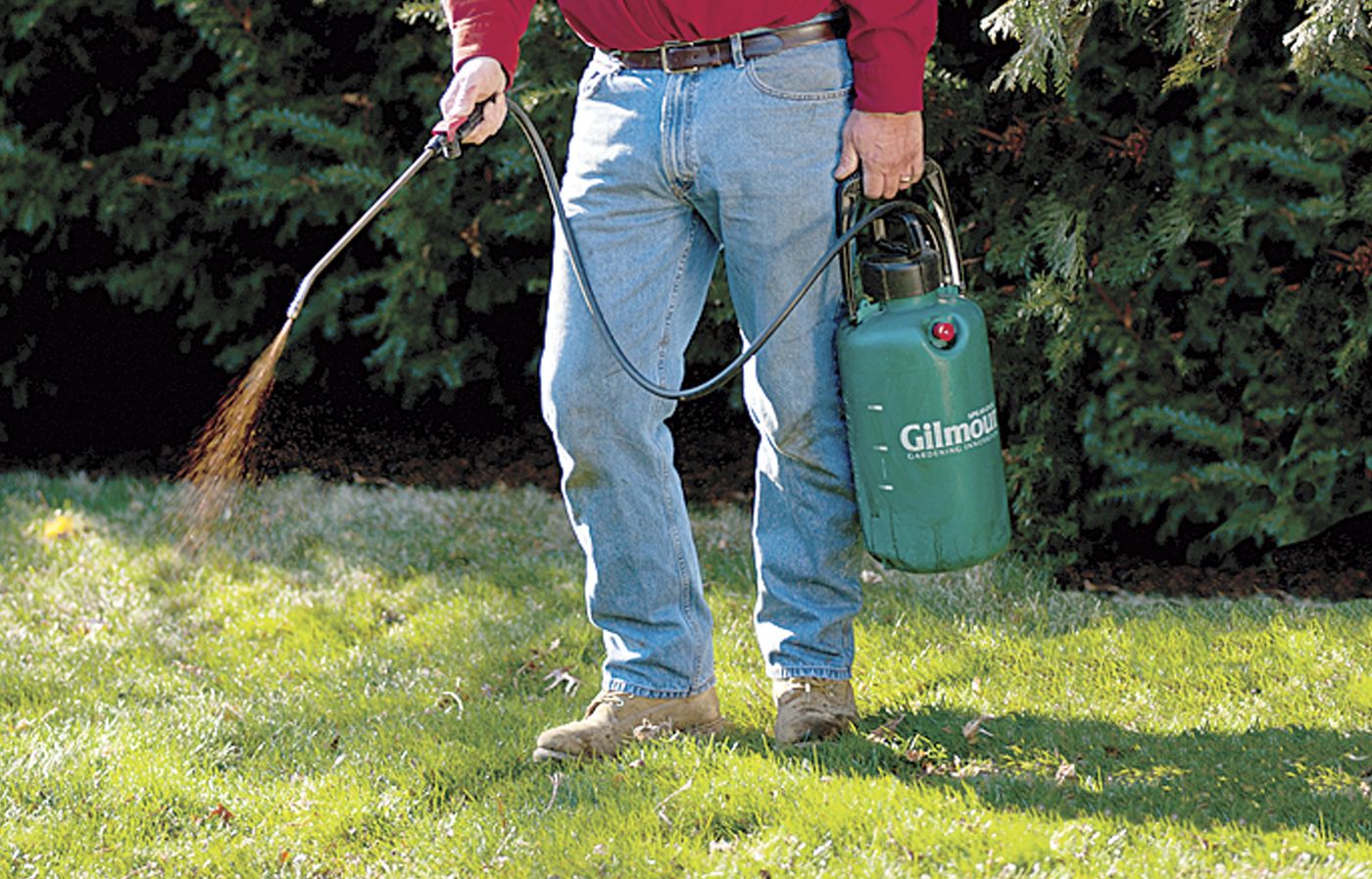 Drill/driver
Drill/driver Spade bit – 3/8-in.
Spade bit – 3/8-in. drill bit – 3/16-inch
drill bit – 3/16-inch Pump sprayer
Pump sprayer
We may be compensated if you purchase through links on our website. Our team is committed to delivering honest, objective, and independent reviews on home products and services.
Compost tea is a natural liquid fertilizer that can revolutionize your lawn care routine. This nutrient-rich brew offers a powerful boost to your grass, promoting healthier growth and increased resistance to pests and diseases. In this guide, we’ll explore the benefits of compost tea, how to make it, and the best ways to apply it to your lawn.
What Is Compost Tea?
Compost tea is a liquid extract that you can make by steeping compost in water. This process creates a concentrated solution packed with beneficial microorganisms and nutrients. Unlike traditional compost, plants can quickly absorb compost tea, providing immediate benefits to your lawn.
Roger Cook, This Old House landscaping contractor, explains, “Compost tea is a natural liquid fertilizer loaded with beneficial bacteria and nutrients that reach the roots faster than traditional compost. A lawn treated with the tea grows slower, needs less mowing, and uses less water because of its deep roots. “
Benefits of Using Compost Tea
Using compost tea on your lawn offers numerous advantages over traditional fertilizers, such as the following:
- Better nutrient absorption
- Improved soil structure
- Increased resistance to pests and diseases
- Promotion of beneficial microorganisms
- Reduced need for chemical fertilizers
These benefits contribute to a healthier, more resilient lawn that requires less maintenance over time. By using compost tea, you’re not just feeding your grass—you’re nurturing the entire ecosystem beneath your feet.
Essential Ingredients for Compost Tea
Creating an effective compost tea requires a balanced mix of ingredients. Let’s explore the key components that make up this powerful fertilizer.
Carbon-Rich “Browns”
Carbon-rich materials, often referred to as “browns,” form the foundation of your compost tea. These ingredients provide energy for microorganisms and help maintain the proper balance in your brew. Some examples of carbon-rich materials include dead leaves, straw, shredded paper, and wood chips.
Nitrogen-Rich “Greens”
Nitrogen-rich materials, or “greens,” supply the protein necessary for microbial growth. These ingredients help create a diverse and active microbial population in your compost tea. Examples of nitrogen-rich materials include grass clippings, vegetable scraps, coffee grounds, and fresh plant trimmings.
Additional Nutrients
To further enhance your compost tea, you can add supplementary nutrients. Roger Cook recommends, “I add 12 ounces each of molasses, liquid kelp, and fish hydrolysate. These last two are sold by Neptune’s Harvest. ” These additions can boost the nutrient content and microbial activity of your brew.
How To Make Compost Tea
Creating your own compost tea is a straightforward process that requires minimal equipment and effort. Follow these steps to brew a potent batch of lawn-nourishing tea.
Materials You’ll Need
Before you begin, collect the following items:
- Additional nutrients (if desired)
- Aerator and tubing
- Compost mixture
- Mesh bag or cheesecloth
- Rain barrel or large container
Preparing the Compost Mixture
Roger Cook suggests, “My compost recipe is 2 parts carbon-rich ‘browns,’ such as dead leaves, to 1 part nitrogen-rich ‘greens,’ like rotted grass clippings. ” Mix these ingredients thoroughly to create a balanced compost base.
Step 1: Add the Tubing
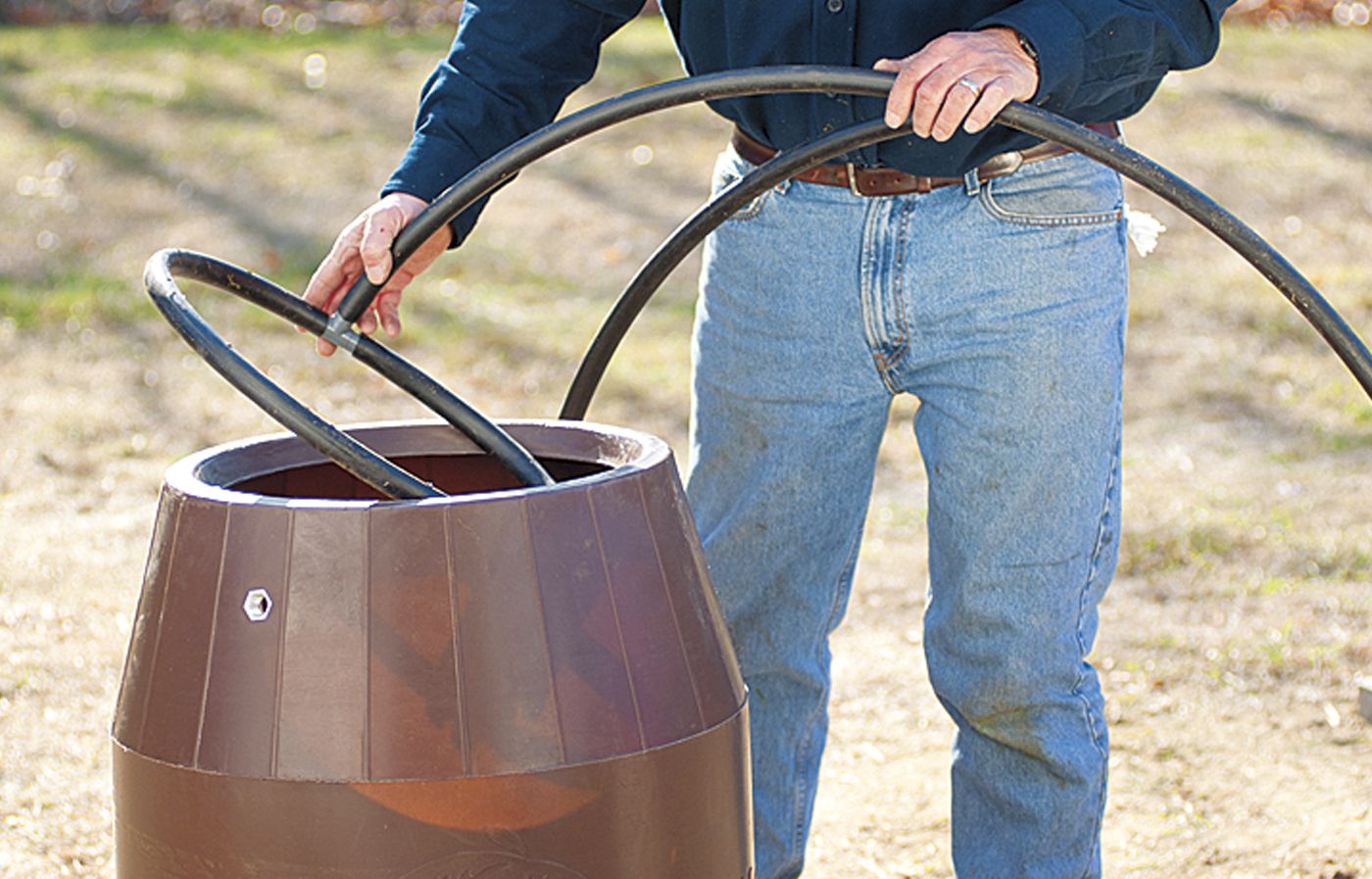
Cut a length of 3/8-inch-diameter irrigation tubing and bend it into a ring that fits the bottom of the barrel. Join the ends with a T-fitting, and attach the remaining tubing to the T’s third leg. Using a 3/16-inch bit, drill a series of holes into the top of the ring about 1 inch apart; they let air bubble up, encouraging the growth of beneficial bacteria and reducing odors.
Step 2: Place the Lid
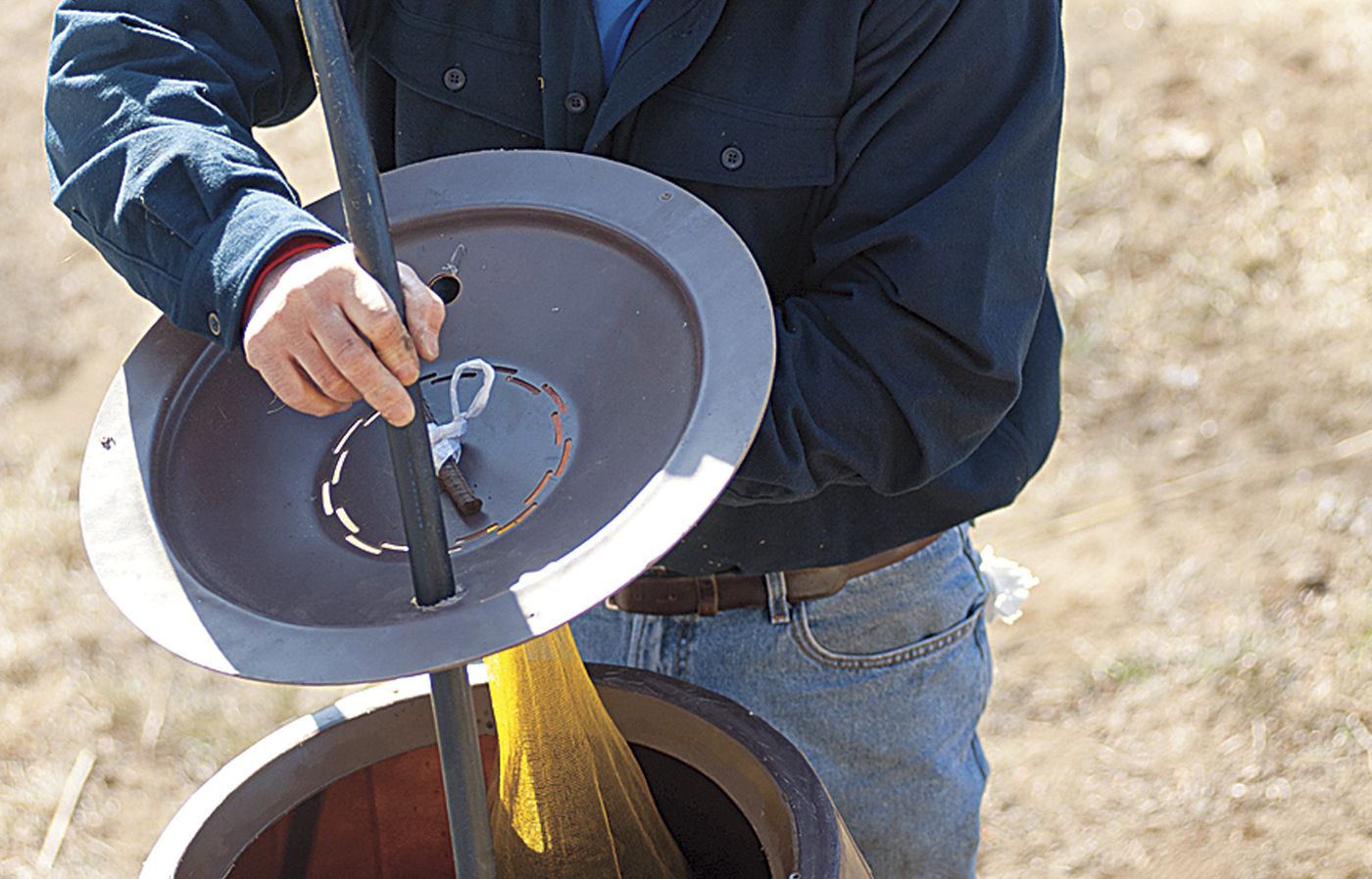
Drill a 3/8-inch hole in the barrel’s lid, and thread the irrigation tubing up through it. Fill a nylon mesh bag or cheesecloth with about 7 pounds of aged compost. Pull the top of the sack through the lid’s center hole, and hang it from a dowel so that the sack is suspended in the center of the barrel. Place the lid over the barrel.
Step 3: Let It Brew
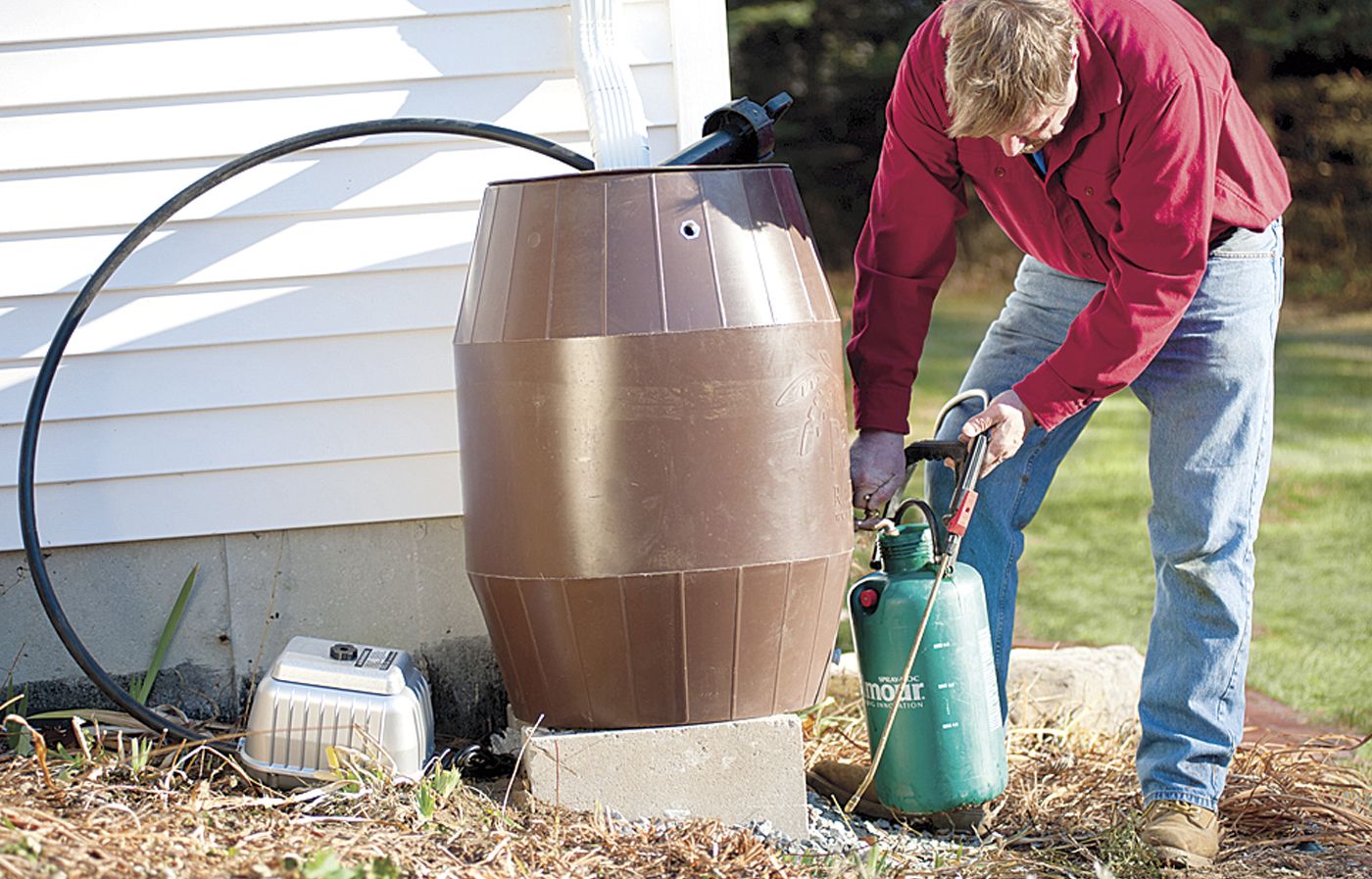
Connect the barrel to the downspout. Using a stainless steel hose clamp, secure the aerator to the end of the tubing coming out of the barrel. Once the barrel is full of rainwater, run the aerator for at least 24 hours. (If using tap water, aerate for 20 minutes before adding compost.) Leave the aerator on whenever there’s tea in the barrel to keep the bacteria alive.
Step 4: Spray the Lawn
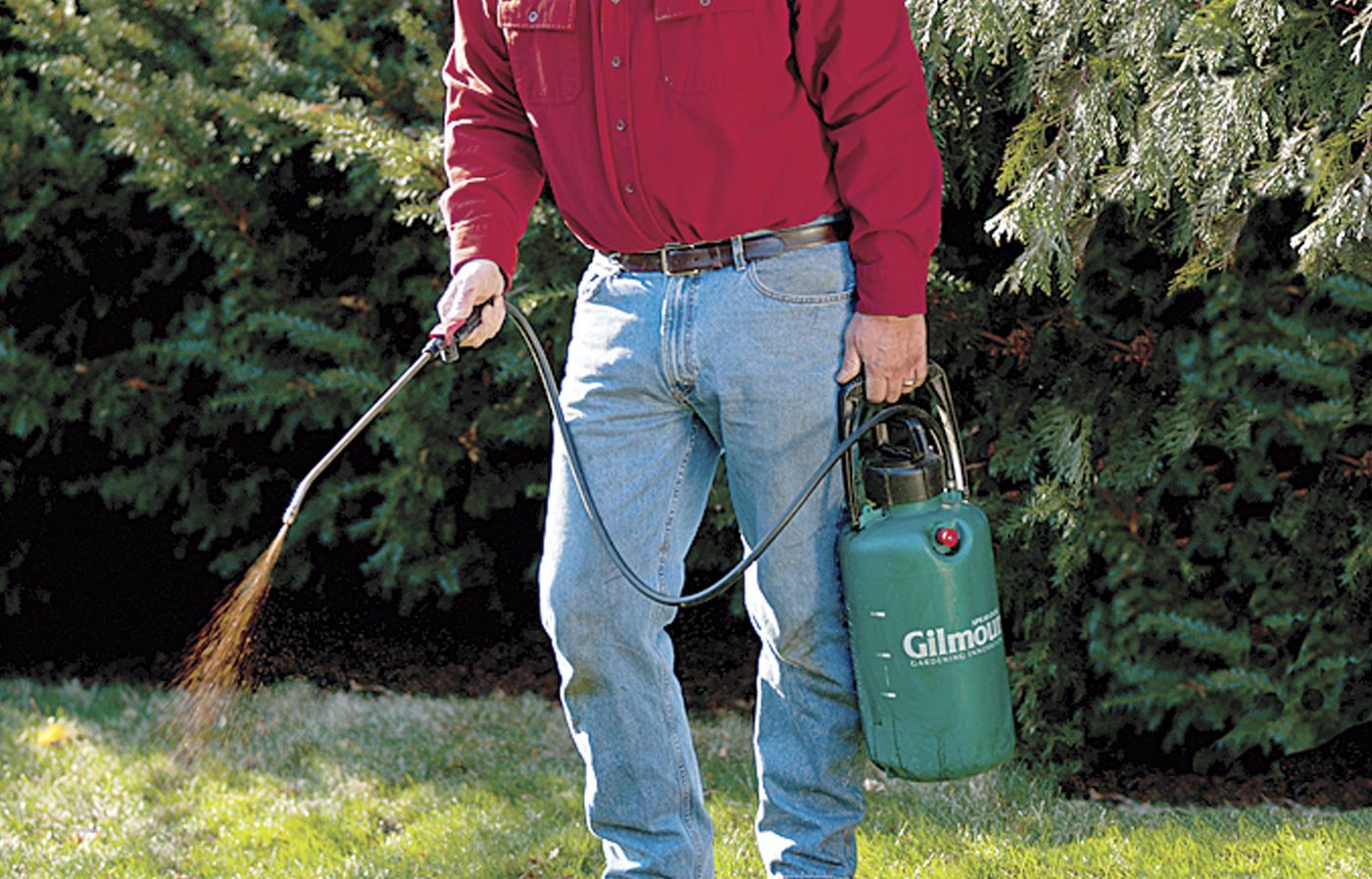
For lawns of 400 square feet or less, wet the grass with the tea using a pump sprayer. Use a backpack or walk-behind sprayer for larger lawns. One gallon covers about 1,000 square feet. At a minimum, apply the tea in early spring, summer, early fall, and just before the lawn goes dormant, although there’s no harm in letting your grass drink the tea more frequently.
Troubleshooting Common Issues With Compost Tea
Even with careful preparation, you may face some challenges when making or using compost tea. Here are solutions to common problems:
Ineffective Brew
If you’re not seeing the results you expect, check the quality of your compost and make sure you’re using the correct ratio of “browns” to “greens. ” Also, verify that you’re brewing for the full 24-hour period.
Odor Problems
If your compost tea develops an unpleasant odor, it may indicate anaerobic conditions. Verify that your aerator is functioning properly, and consider increasing aeration time.
Storage Concerns
Compost tea is best used immediately after brewing. If you must store it, keep it aerated and use it within a few days to maintain its effectiveness.
Alternative Uses for Compost Tea
While lawn care is a primary use for compost tea, it has several other applications in your garden, including the following:
- Compost activator for your compost pile
- Foliar spray for plants
- Natural pest deterrent when sprayed on plant leaves
- Nutrient boost for vegetable gardens
- Soil drench for potted plants
These versatile uses make compost tea a valuable addition to any gardener’s toolkit.
